
These are the resources that support this NYS Standard.
NY-GEO-G.MG.3: Apply geometric methods to solve design problems.
There are 151 resources.| Title | Description | Thumbnail Image | Curriculum Topics |
|---|---|---|---|
Google Earth Voyager Collection |
This collection aggregates all the Google Earth Voyager Stories. There are a total of 17 stories. | 
|
Perpendicular Lines, Parallel Lines, Applications of Points and Lines, Applications of Circles, Cylinders, Applications of Angles and Planes, Applications of Polygons, Pyramids, Triangular Prisms, Rectangular Prisms, 3-Dimensional Figures, Applications of Surface Area and Volume, Rational Functions and Equations, Surface Area, Volume, Applications of Triangles and Applications of Quadrilaterals |
Math Video Collection: Geometry Applications Video Series: 3D Geometry |
Overview This collection aggregates all the math videos and resources in this series: Geometry Applications Video Series: 3D Geometry. There are a total of 18 resources. | 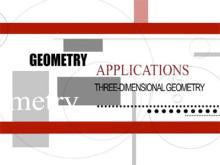
|
3-Dimensional Figures, Pyramids, Cylinders, Applications of 3D Geometry, Triangular Prisms and Rectangular Prisms |
Math Video Collection: Geometry Applications Video Series: Angles and Planes |
OvThis collection aggregates all the math videos and resources in this series: Geometry Applications Video Series: Angles and Planes. There are a total of 13 resources. | 
|
Applications of Angles and Planes, Definition of an Angle and Applications of Points and Lines |
Math Video Collection: Geometry Applications Video Series: Circles |
Overview This collection aggregates all the math videos and resources in this series: Geometry Applications Video Series: Circles. There are a total of 13 resources. | 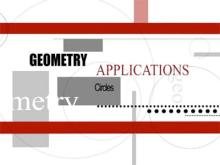
|
Applications of Circles and Definition of a Circle |
Math Video Collection: Geometry Applications Video Series: Coordinate Geometry |
OveThis collection aggregates all the math videos and resources in this series: Geometry Applications Video Series: Coordinate Geometry. There are a total of 13 resources. | 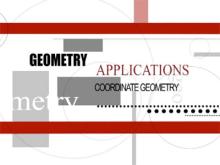
|
Applications of Coordinate Geometry and Coordinate Systems |
Math Video Collection: Geometry Applications Video Series: Points and Lines |
OverThis collection aggregates all the math videos and resources in this series: Geometry Applications Video Series: Points and Lines. There are a total of 12 resources. | 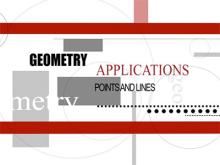
|
Applications of Points and Lines, Definition of a Line and Definition of a Point |
Math Video Collection: Geometry Applications Video Series: Polygons |
OverviewThis collection aggregates all the math videos and resources in this series: Geometry Applications Video Series: Polygons. There are a total of 12 resources. | 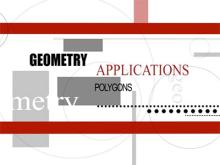
|
Applications of Polygons and Definition of a Polygon |
Math Video Collection: Geometry Applications Video Series: Surface Area and Volume |
OvervieThis collection aggregates all the math videos and resources in this series: Geometry Applications Video Series: Surface Area and Volume. There are a total of 12 resources. | 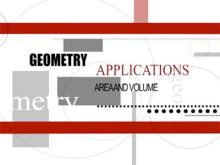
|
Applications of Surface Area and Volume, Surface Area and Volume |
Math Video Collection: Geometry Applications Video Series: Transformations |
This collection aggregates all the math videos and resources in this series: Geometry Applications Video Series: Transformations. There are a total of 12 resources. | 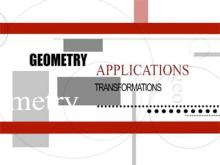
|
Applications of Transformations and Definition of Transformations |
Math Video Collection: Geometry Applications Video Series: Triangles |
OverviewThis collection aggregates all the math videos and resources in this series: Geometry Applications Video Series: Triangles. There are a total of 12 resources. | 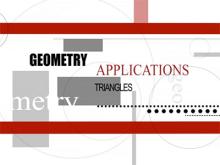
|
Definition of a Triangle and Applications of Triangles |
Math Video Collection: Geometry Applications Video Series: Quadrilaterals |
OThis collection aggregates all the math videos and resources in this series: Geometry Applications Video Series: Quadrilaterals. There are a total of 12 resources. | 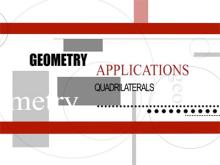
|
Applications of Quadrilaterals and Definition of a Quadrilateral |
Algebra Nspirations Teacher's Guide: Variables and Equations |
Algebra Nspirations Teacher's Guide: Variables and Equations
This is the Teacher's Guide that accompanies Algebra Nspirations: Variables and Equations. |

|
Applications of Equations and Inequalities |
Closed Captioned Video: Geometry Applications: 3D Geometry |
Closed Captioned Video: Geometry Applications: 3D Geometry In this program we explore the properties of three-dimensional figures. We do this in the context of two real-world applications. In the first, we look at the three-dimensional structure of Mayan pyramids. These stair-step structures provide a unique opportunity to also explore sequences and series. |
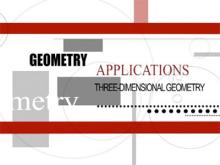
|
3-Dimensional Figures and Applications of 3D Geometry |
Closed Captioned Video: Geometry Applications: 3D Geometry, 1 |
Closed Captioned Video: Geometry Applications: 3D Geometry, Segment 1: Introduction. We visit ancient Greece to learn about the Platonic Solids. This provides an introduction to the more general topic of three-dimensional figures. |
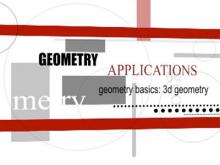
|
3-Dimensional Figures and Applications of 3D Geometry |
Closed Captioned Video: Geometry Applications: 3D Geometry, 2 |
Closed Captioned Video: Geometry Applications: 3D Geometry, Segment 2: Pyramids Rectangular Prisms. Mayan pyramids are essentially stacks of rectangular prisms. The volume of each successive level is a percentage decrease of its lower neighbor. This introduces the notion of a geometric sequence and series, including an infinite series. |
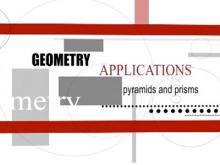
|
3-Dimensional Figures, Pyramids and Applications of 3D Geometry |
Closed Captioned Video: Geometry Applications: 3D Geometry, 3 |
Closed Captioned Video: Geometry Applications: 3D Geometry, Segment 3: Cylinders The Shanghai Tower in China is a stack of cylindrical shapes, where each successive layer is a percentage decrease of its lower neighbor. As with the previous section, this introduces the notion of a geometric sequence and series. |
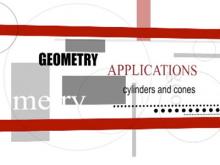
|
3-Dimensional Figures, Cylinders and Applications of 3D Geometry |
Closed Captioned Video: Geometry Applications: Angles and Planes |
Closed Captioned Video: Geometry Applications: Angles and Planes
In this program we explore the properties of angles and planes. We do this in the context of two real-world applications. In the first, we explore Japan's Himeji Castle and in the process learn about different types of angles and how they're used in a defensive fortification. |
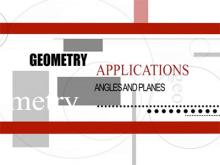
|
Applications of Angles and Planes |
Closed Captioned Video: Geometry Applications: Angles and Planes, 1 |
Closed Captioned Video: Geometry Applications: Angles and Planes, Segment 1: Introduction
The observatory in Arecibo, Puerto Rico provides astronomers insights into the structure of our solar system. Geometrically, the solar system relies on the plane known as the ecliptic. |
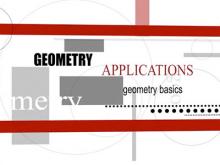
|
Applications of Angles and Planes |
Closed Captioned Video: Geometry Applications: Angles and Planes, 2 |
Closed Captioned Video: Geometry Applications: Angles and Planes, Segment 2: Angles
Himeji castle in Japan is a marvel of architecture and a startling example of geometry and military science. |
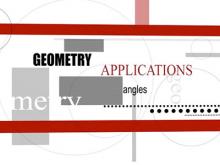
|
Applications of Angles and Planes |
Closed Captioned Video: Geometry Applications: Angles and Planes, 3 |
Closed Captioned Video: Geometry Applications: Angles and Planes, Segment 3: Planes
In the Canadian Rockies, the Burgess Shale fossils provide a window to prehistoric Earth. Fossil layers are folded into sedimentary rocks. And sedimentary rocks are examples of parallel planes. This segment uses the properties of planes to analyze fossils. |
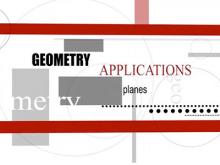
|
Applications of Angles and Planes |
Closed Captioned Video: Geometry Applications: Area and Volume |
Closed Captioned Video: Geometry Applications: Area and Volume
In this program we look at applications of area and volume. We do this in the context of three real-world applications. In the first, we look at the sinking of the Titanic in the context of volume and density. |
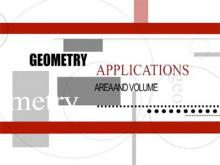
|
Applications of Surface Area and Volume, Surface Area and Volume |
Closed Captioned Video: Geometry Applications: Area and Volume, 1 |
Closed Captioned Video: Geometry Applications: Area and Volume, Segment 1: Volume and Density.
The sinking of the Titanic provides an opportunity to explore volume, density, and buoyancy. Students construct a mathematical model of the Titanic to determine why it sank and what could have been done to prevent it from sinking. |
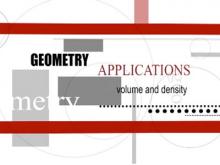
|
Applications of Surface Area and Volume, Surface Area and Volume |
Closed Captioned Video: Geometry Applications: Area and Volume, 2 |
Closed Captioned Video: Geometry Applications: Area and Volume, Segment 2: Surface Area.
The glass-paneled pyramid at the Louvre Museum in Paris is a tessellation of rhombus-shaped glass panels. Students create a model of the pyramid to calculate the number of panels used to cover the surface area of the pyramid. |
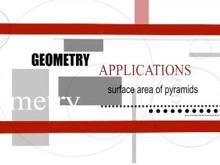
|
Applications of Surface Area and Volume, Surface Area and Volume |
Closed Captioned Video: Geometry Applications: Area and Volume, 3 |
Closed Captioned Video: Geometry Applications: Area and Volume, Segment 3: Ratio of Surface Area to Volume.
The Citibank Tower in New York City presents some unique design challenges. In addition it has to cope with a problem that all tall structure have to deal with: heat loss. |
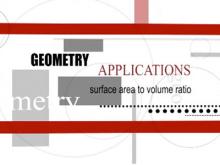
|
Applications of Surface Area and Volume, Surface Area and Volume |
Closed Captioned Video: Geometry Applications: Circles |
Closed Captioned Video: Geometry Applications: Circles
In this program we explore the properties of circles. We do this in the context of two real-world applications. In the first, we look at the design of the Roman Coliseum and explore how circular shapes could have been used to design this elliptical structure. |
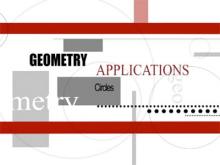
|
Applications of Circles and Definition of a Circle |

